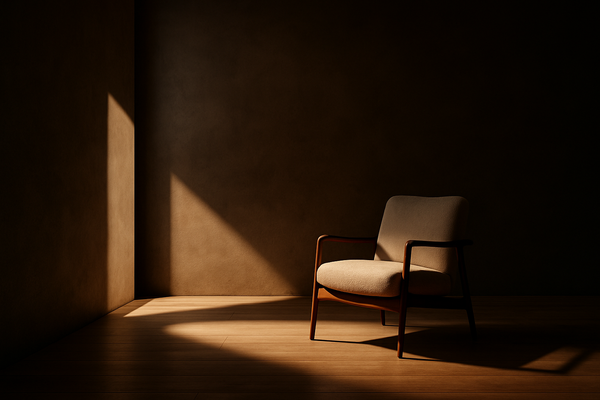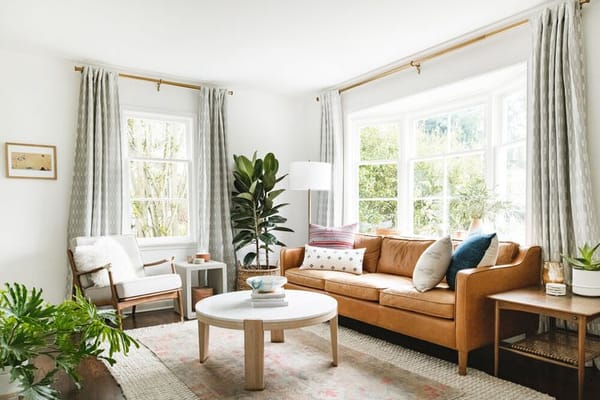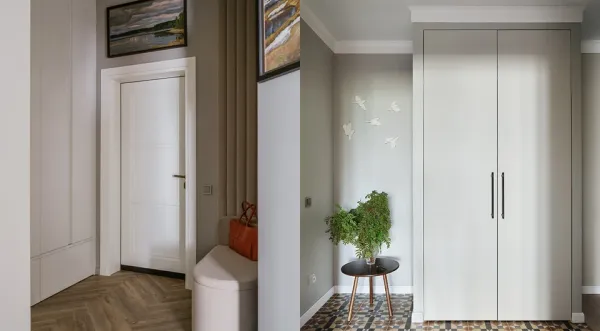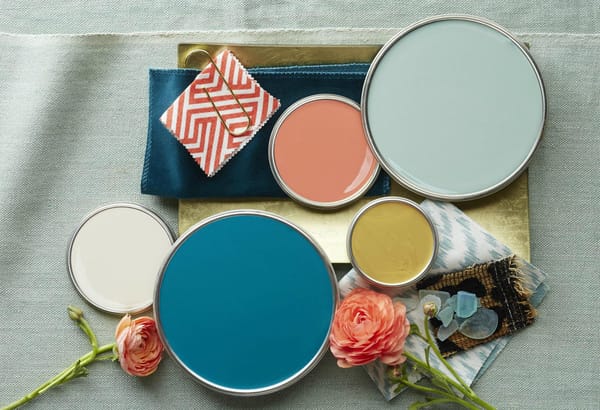Lesson 10: Design Flow: How to Create Movement in a Room
Good flow makes a room feel effortless. It's not about having perfect furniture, it's about how your space moves, breathes, and supports you.
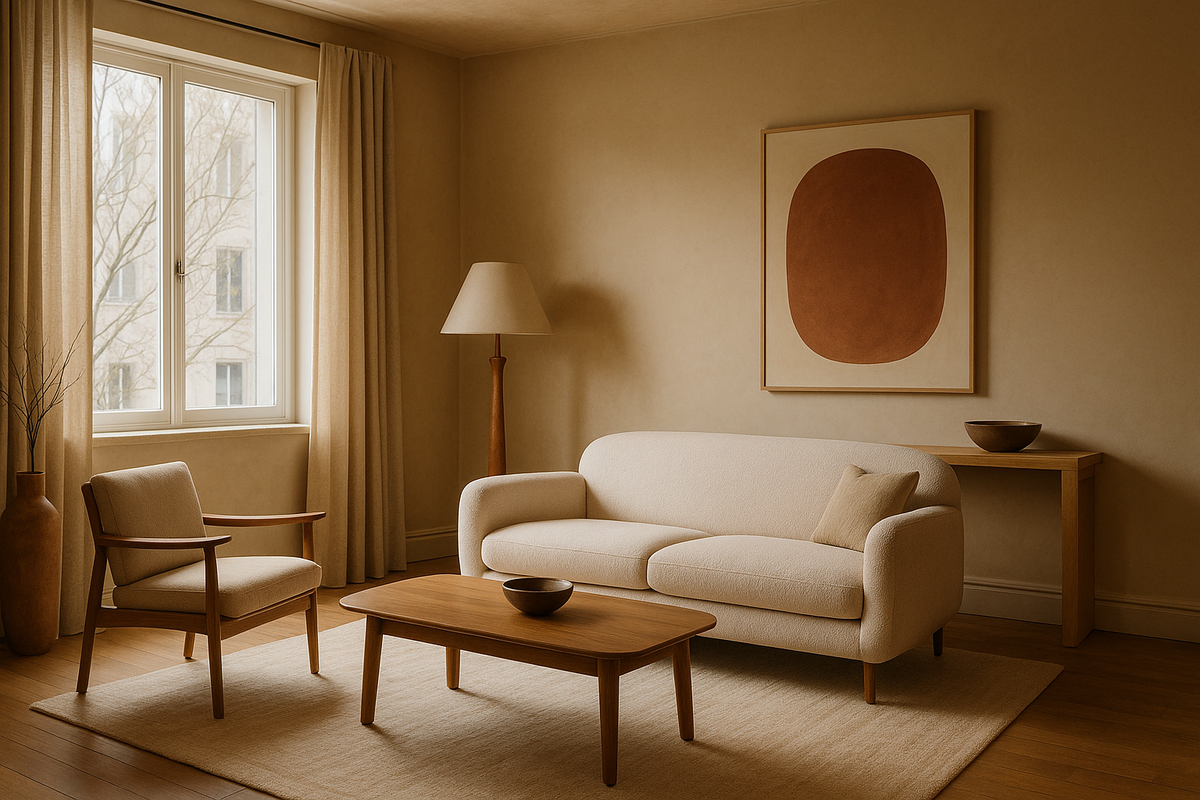
A beautiful room isn't just filled with lovely things. It flows. There's a quiet sense of ease to it; your eye moves from one area to the next without hesitation. Nothing feels random or jarring. You don't have to think too hard to understand where to go, what to look at, or how to feel. It simply works.
This quality is what interior designers call flow.
Flow in interior design is both visual and physical. It's how smoothly you move through a space without your body, and how comfortably your eyes move through it without hitting any awkward stops. When flow is missing, a space can feel disjointed, even if all the individual pieces are nice on their own. But when flow is present, the room feels whole. Calm. Alive in a very quiet, thoughtful way.
So how do you design a space that flows?
Let the room breathe
Start by looking at how you physically move through the space. Every room has natural pathways, places where your feet want to go. If something blocks your path, even a little, it breaks the sense of ease.
A common mistake is furniture that's just a little too big, or placed just a little too close to where people walk. Even a narrow gap between a chair and a table can make you feel like you have to squeeze through. That small disruption adds tension, even if you don't consciously notice it.
Try walking through your space with fresh eyes. Do you bump into corners? Are you stepping over rug edges or navigating around a lamp? These are small details, but they matter. A flowing room allows you to move freely, almost without thinking.
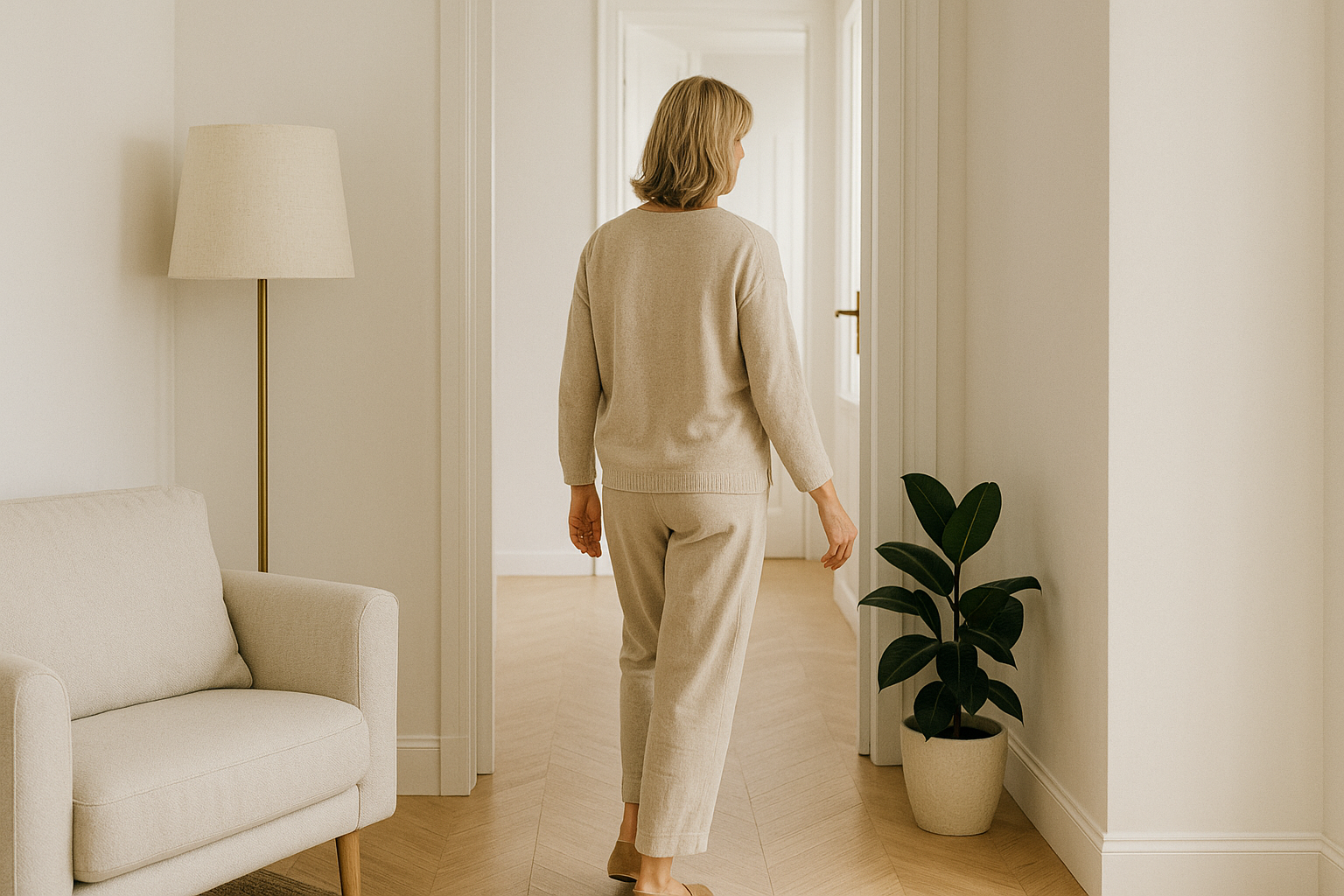
Visual rhythm: how your eyes move
Now look at how your eyes move across the space. Do they glide naturally from one area to the next? Or do they get stuck, or worse, lost?
A room with good visual flow feels balanced. There's rhythm to it. Your attention lands gently on one element, then is drawn to the next. These are clear focal points, soft repetitions, and enough negative space to rest your gaze in between.
One way to support this flow os through repetition. This doesn't mean everything has to match; it means there should be subtle echoes in the space. Maybe the curve of the chair repeats in the round shape of a mirror. Maybe the warm tone of a wooden table shows up again in a woven basket across the room. These connections create continuity. They guide your eye gently, like stepping stones across a river.
Another way to create visual flow is by using anchors. These are pieces that hold visual weight: a large artwork, a statement chair, a pendant light hanging over the table. Anchors give the eye something to focus on. They act like visual pauses in the room's rhythm. You can use them to direct attention and bring order to a space that might otherwise feel scattered.
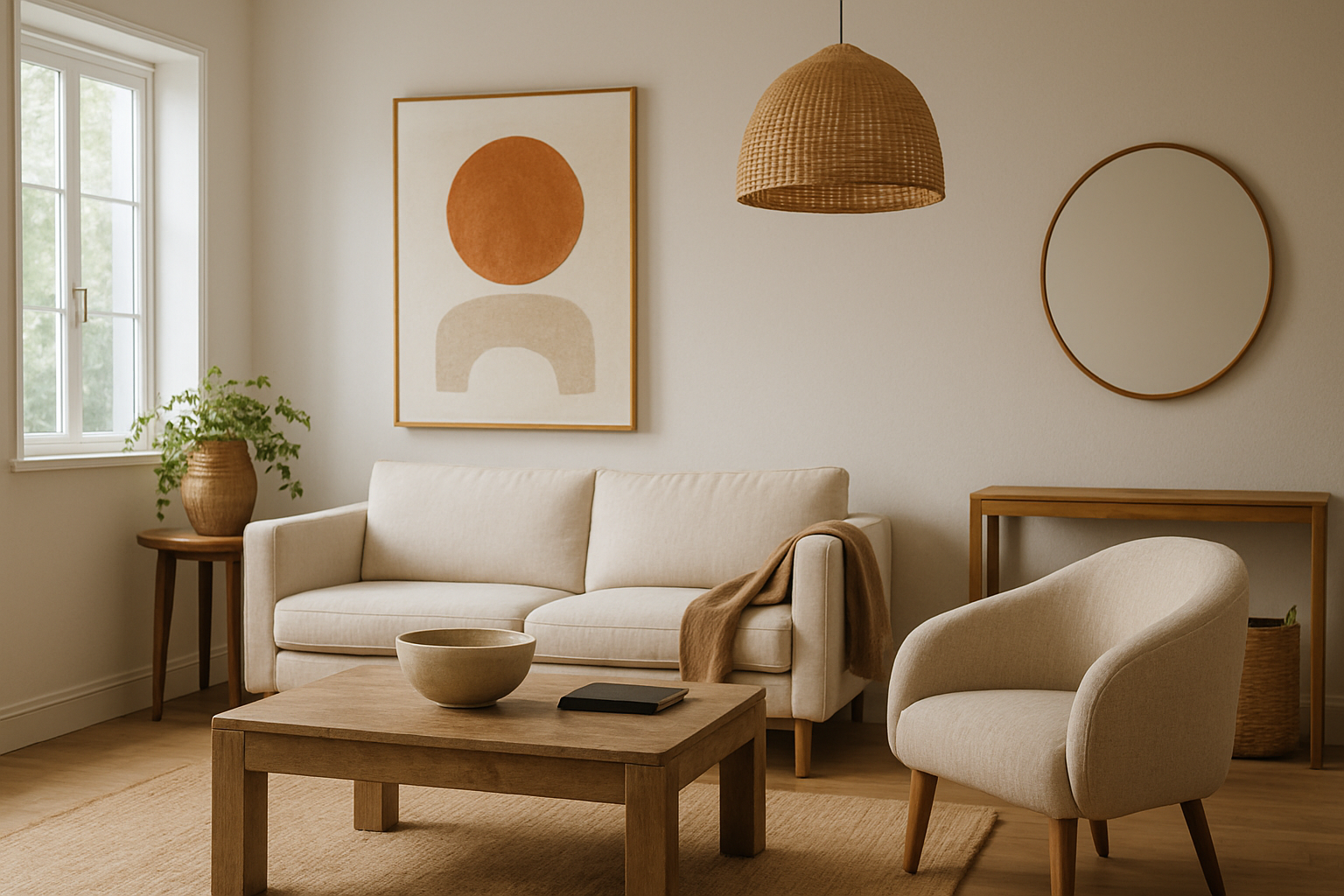
Arrangement matters more than style
You don't need expensive pieces to create flow. You need thoughtful placement.
A room can feel off even when everything in it is beautiful. Often, the problem isnt what you chose: it's where you put it. Flow isn't about lining furniture up against the walls or filling every corner. It's about how the pieces speak to each other.
A chair facing a sofa creates a sense of conversation. A lamp placed between two pieces creates a connection. A rug placed under a table, not too big, not too small, gathers elements into one visual group.
Try to imagine your room as a conversation. Which pieces are talking to each other? Which ones are left out or interrupting the rest?
Sometimes, pulling one chair just a few inches forward can change everything. Sometimes, removing a single object gives the room room to breathe again.
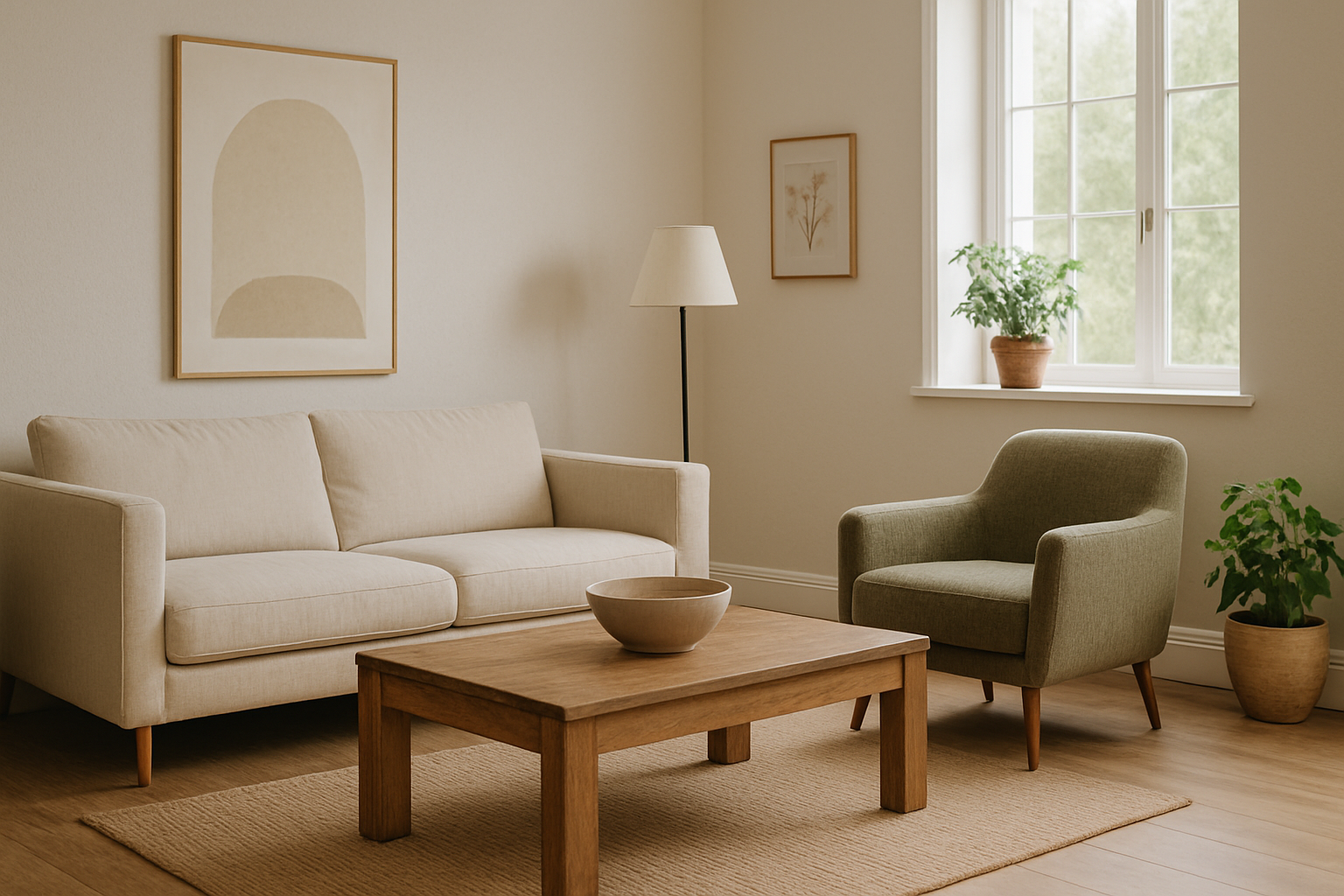
Negative space: the space between things
Flow isn't just created by what you add, it's created by what you leave out.
Negative space is the empty space between objects. Its the pause between notes in music, the silence between words in a sentence. Without it, everything feels crowded, loud, and rushed.
In a well-designed space, negative space is intentional. It gives shape to everything around it. It lets pieces stand out. It allows energy to move. Don't be afraid to leave areas a little empty. That quiet space is doing more than you think.
If something in your room feels "off," resist the urge to add more. Instead, try taking something away. You might be surprised how much lighter and more elegant the room becomes.

Flow and mood
The way a space flows doesn't just affect how it looks. It affects how it feels.
A room with good flow feels peaceful. It feels like it knows what it's doing. There's a sense of quiet confidence to it. It doesn't try too hard. It just works.
When you walk into a room like this, your body relaxes. You're not distracted by things that feel out of place. You don't have to think about where to sit or how to move. The space welcomes you. It supports you.
That's the power of good design: it removes friction. It lets you focus on living, not on navigating.
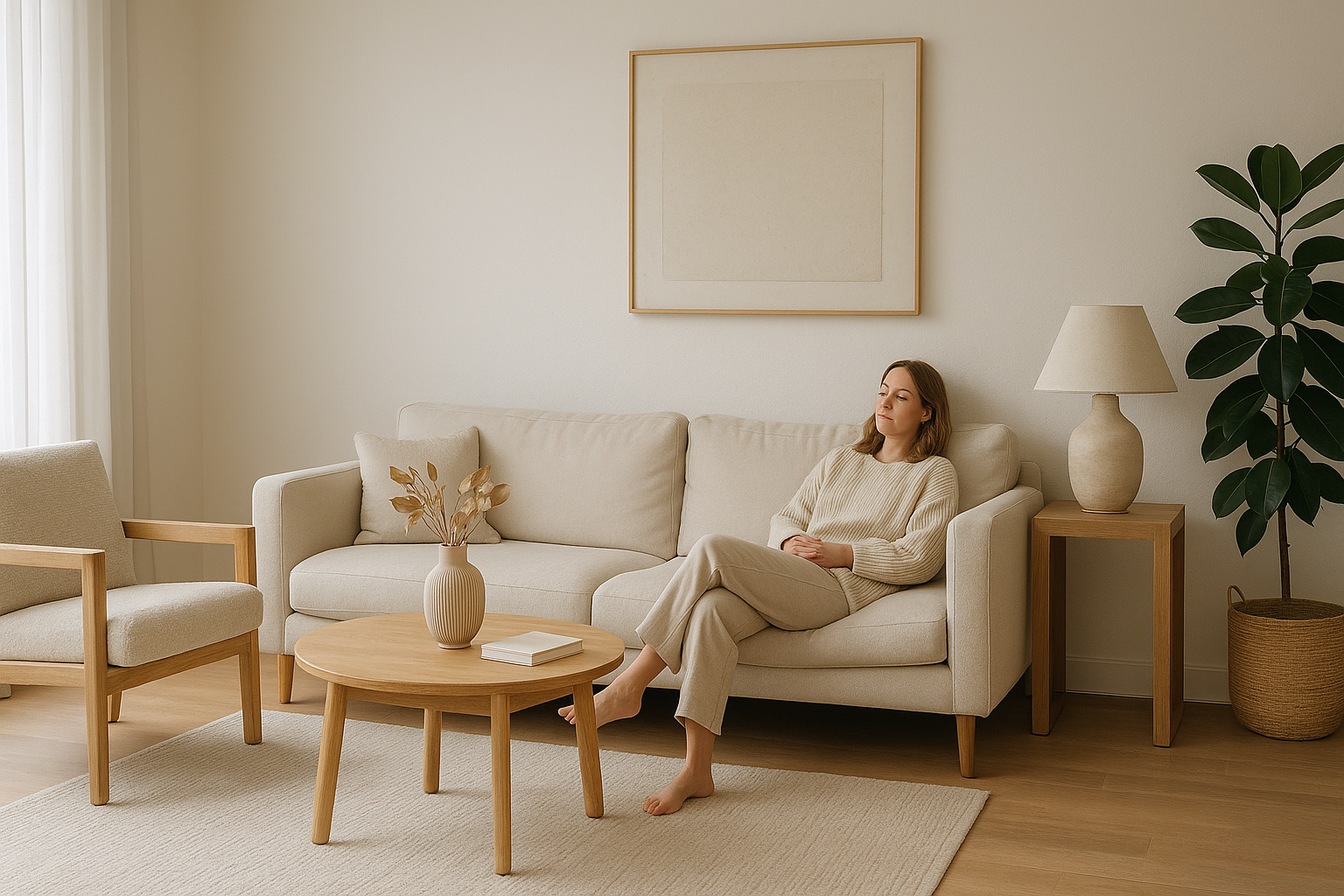
A gentle way to begin
If you're not sure where to start, try this simple exercise: walk into your room as if you've never seen it before. Imagine you're a guest. Where does your eye go first? Where does your body want to move? Where do you feel stuck or confused?
Take mental notes. Is there a corner that feels too busy? A space that feels empty but not in a good way? A beautiful object that's hidden in the shadows?
Then, try adding just one thing. Move a chair. Center a rug. Add a mirror to reflect light. Remove an extra pillow. Watch what happens. You don't need a full makeover, just a shift in intention.
Designing flow is not about following strict rules. It's about listening to the space. Felling how energy moves through it. Trusting your eyes and your body to guide you.
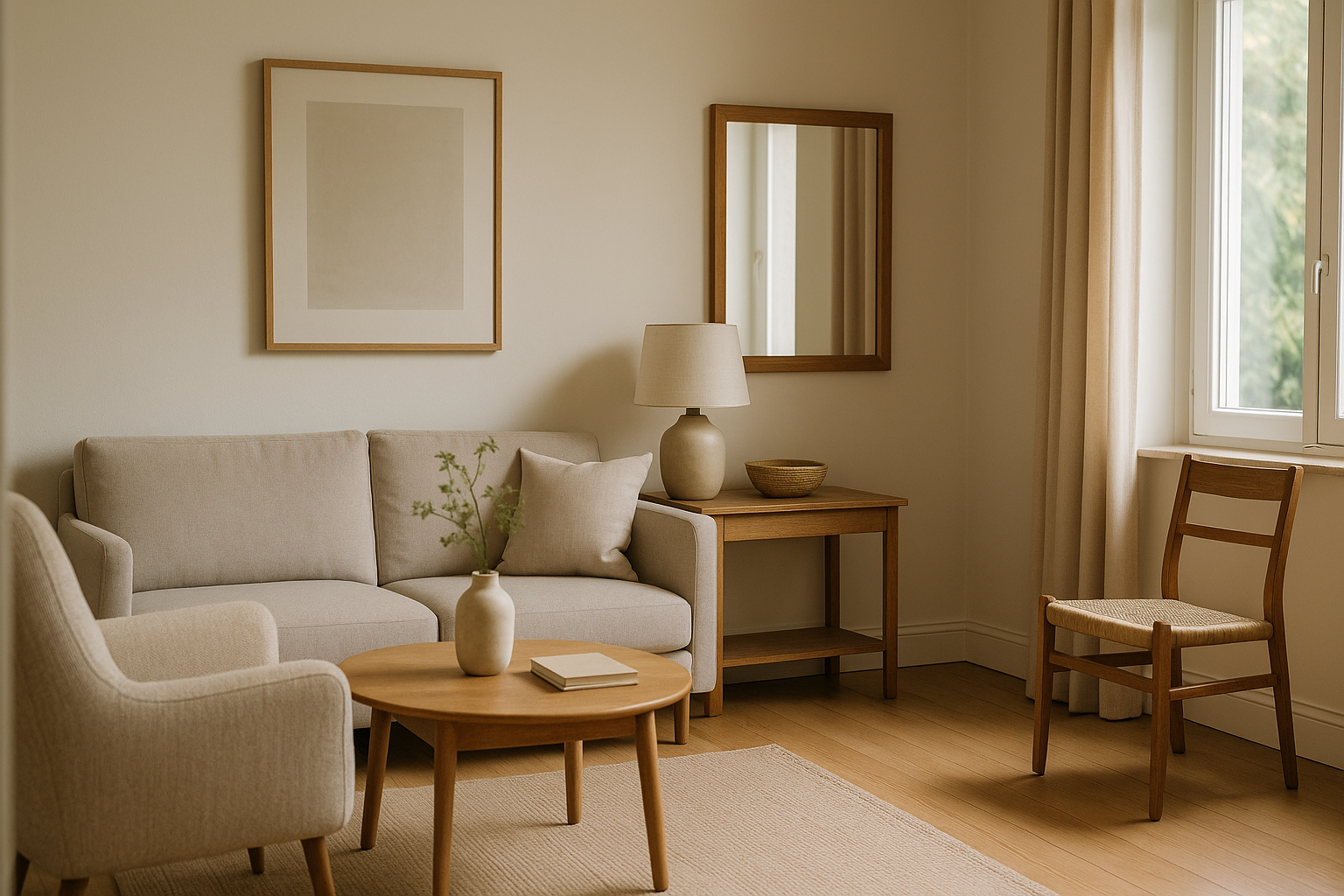
Let your space move with you
In the end, flow is movement. It's the gentle dance between function and beauty. It's the way your sace holds you and how you hold it in return.
You don't need to chase perfection. You just need to pay attention. Let the room breathe. Let the shapes and textures talk to each other. Let there be rest and rhythm.
Design isn't a race to fill space. It's an invitation to make space meaningful.
So next time you walk through your home, ask yourself:
Does it move with you, or against you?
If something feels stuck, start small. Shift. Adjust. Listen.
Your home will show you the way.
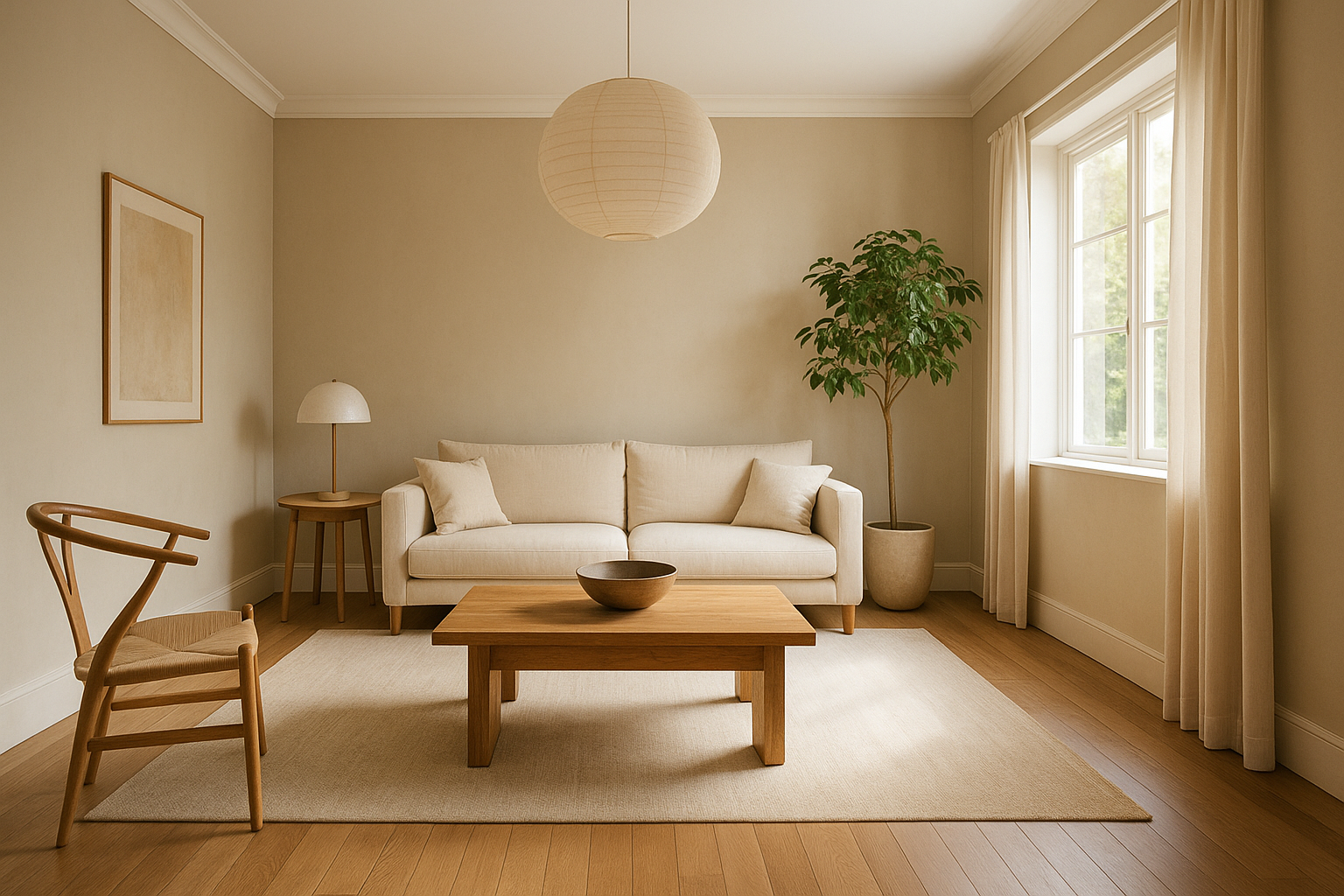
Want more lessons like this?
This was Lesson 10 of the Aesthete Daily Lessons. You can find the previous 9 lessons here, and if you'd like early access to upcoming content, ad-free reading, and exclusive lessons, consider becoming a supporter. It's just 3.99/month and helps my project grow.
Let your space become a reflection of your intention.
You deserve a home that flows.

